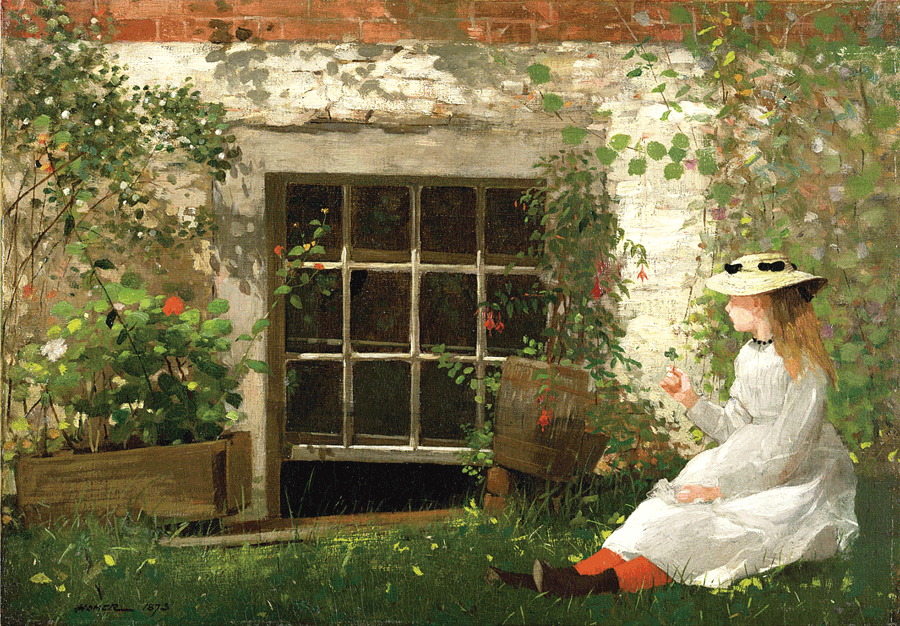
“What they call talent is nothing but the capacity for doing continuous work in the right way.”
—Winslow Homer
With his straw hat, three-piece suit, walking stick and his general calm demeanor, Winslow Homer cut a dashing figure. His paintings, although not always well received, came to define a fluid and prolific oeuvre from a gifted watercolorist.

He was born February 24, 1836 in Boston to Charles and Henrietta Homer. Homer took on many of his mother’s traits, including her quiet, strong-willed social nature, her dry sense of humor, and her artistic talent.
His father, on the other hand, was a volatile, restless, businessman who gave up his hardware store to seek a fortune in the California gold rush. When that failed, he went to Europe for other get-rich schemes that did not materialize.
Winslow Homer began working in oil paintings and became the front editor and design chief for Harper’s Weekly. His career as an illustrator lasted almost 20 years. He opened a studio in New York City in 1859 and attended classes at the National Academy of Design. Harper’s sent Homer to the front lines of the American Civil War where he sketched battle scenes and camp life.
Homer lived in Paris for a year and the main subject for his dozen small paintings were of pleasant life. Homer demonstrated a maturity of feeling, depth of perception, and mastery of technique that was immediately recognized by many critics. One , however, said that “A child with an ink bottle could not have done worse.”
In 1876 he returned to Virginia where he had lived before the war. In 1877 Homer became a member of The Tile Club and for a short time, designed tiles for fireplaces. His nickname in the Club was “The Obtuse Bard.” He desired to live a solitary life and be an observer.
Probably as a result of disappointments with women, Homer became reclusive in the late 1870s. He no longer enjoyed urban social life and lived in Gloucester. For a while he even lived at the Eastern Point Lighthouse with the keeper’s family.
With his love of the sea, Homer found a rich source of themes while observing the fishermen, the sea, and the marine weather After 1880 he rarely featured genteel women at leisure, choosing instead to focus on working women.
He lived in the English coastal village of Cullercoats, Tyne, and Wear for two years, 1881-1882. He wrote that “The women are the working bees. Stout hardy creatures.” His works during this time were almost exclusively watercolors.
Homer liked being isolated and solitary and he eventually moved to a small town near Portland, Maine in Summer 1883. Most of the work he did during his final years were some of the most impressive water colors that he created during his career.
By 1900 Homer had found financial stability. His paintings sold for good prices from museums and he began to receive rent from real estate properties. He passed this life in 1910 at the age of 74 in his Prouts Neck studio and was interred in the Mount Auburn Cemetery in Cambridge, Mass. His Prouts Neck Studio is a National Historic Landmark and is owned by the Portland Museum of Art which offers tours.
In 1962 the U.S. Post Office released a commemorative stamp honoring Winslow Homer. In 2010 a 44-cent stamp was issued featuring Homer’s ”Boys in a Pasture.” Three of my favorite Winslow Homer paintings are “The Four Leaf Clover” (1873),“Fresh Eggs” (1874) and “Girl and Laurel” (1879).

